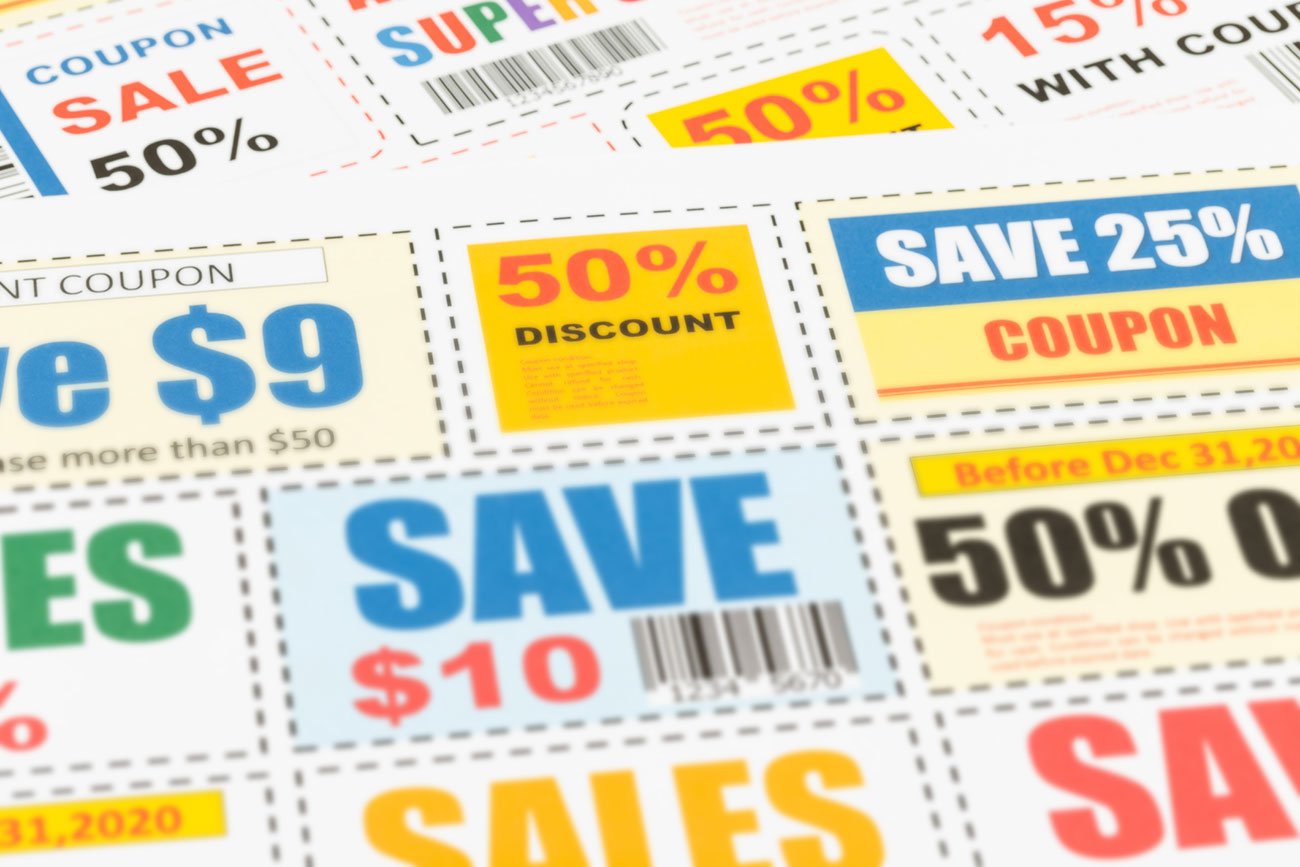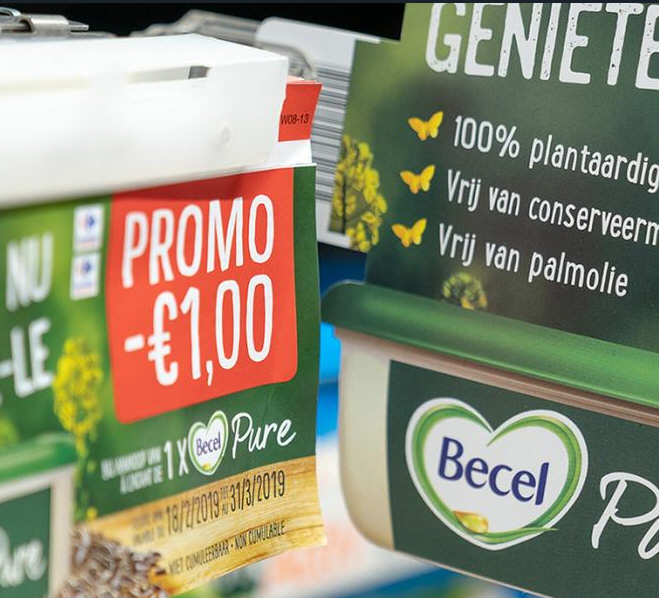How do clients and retailers cope with inflation shock?
After the crisis resulting from the COVID-19 pandemic, it was expected that trends in shopping behaviour would stabilise in 2022. Instead, the war in the Ukraine fuelled a new period of uncertainty and instability.
Inflation hit hard in May, with market leaders reporting on the impact of higher costs on their activities. It was not long before investors responded and some of the largest retailers saw their share prices drop.
Retailers across the entire sector need to acknowledge this new reality of record inflation and develop solutions to keep their clients and guarantee their growth.
Companies are being confronted with delayed growth in turnover,and lower margins. It’s a challenging combination for retailers. They don’t just have to struggle with the rising costs of goods, but with increased costs for logistics, energy and wages.
Although total expenditure figures were still strong at the beginning of 2022, consumer spending dropped in certain categories that had previously enjoyed growth. As a result of this, expenditure figures have flattened out or declined. A large part of the increases appearing in year-on-year growth figures for expenditure on foodstuffs is directly due to inflation, not the result of increased consumption. The story is the same in categories such as fuel, travel and restaurants: consumers are paying more, but using less.
These shifts are starting to become visible in shopping behaviour, with more consumers reporting in 2022 than ever before that they have changed preferred brands and stores since the beginning of the pandemic. The majority say that they are planning to keep changing, with price at the top of the list of reasons motivating them.
There are a number of areas where market leaders can direct their efforts to transform this period of stress into an opportunity for the future.
Re-examining category strategies to reproduce margin profiles and shifts in the purchasing behaviour of consumers.
In the current environment, consumers are showing less brand loyalty, switching to private-label products to cope with inflation. To take advantage of this, retailers need to regularly review their category strategies.
Knowing which product categories are suffering most from inflation pressure and which ones are mostly likely to undergo significant changes in consumer behaviour helps in making well-considered category-strategy decisions.
Working in detail with prices and promotions and delivering value tailored to the consumer.
Instead of making broad price increases that might damage customer trust, retailers can fine-tune their inflationary price responses to the client and the product segment, taking into account the margin performance and the willingness of the consumer to pay.
Price increases are unpleasant for consumers and merchants.
Retailers and brands that choose a diversified and targeted approach will safeguard their profitability and customer relations.
How do shoppers react to what are often drastic budgetary limitations? How can brands and retailers best manage this new reality?
The reactions and behaviour of consumers depend on a number of factors. The analysis of these external factors helps to better understand shoppers. What has the ECB investigated in this area?
Place of residence – It’s not surprising that the place where people live has a major impact on their budgetary concerns and a possible budgetary limit. As the inflation figures differ noticeably between regions, budget is an important consideration for 57% of consumers in Central and Eastern Europe and for just 35% in Western Europe. While just 33% of Swedish shoppers acknowledge wanting more control over their living expenses, it is a top priority for 53% of Italians.
Inflation on food products – Although we have seen comparable inflation percentages for food and drink products in the past, especially around 2008, the total inflation was lower. Today, the wallets of the consumer are under extra pressure from other influences. Namely? Household electricity. While the food prices in the EU increased by an average of 8.6% in May, the energy and housing prices climbed by 16.3%. As people need to spend more on energy, they need to cut down other expenses, including food.
Orientation on price versus quality – With the exception of German buyers who find quality to be somewhat more important than price, buyers in all other EU countries are more price sensitive – and they want to pay less for food and drink. As such, price-oriented consumers ‘normally’ pay an average of 10% less for drinks, and their share of private-label brands is higher than for quality-oriented shoppers.
We have noticed a clear shift in the borders for both price- and quality-oriented countries.
For example, over the first five months of 2022, Belgium reported a loss in value of 1.7%, exclusively as a result of downtrading. Market leaders, premium brands and challengers all saw their market shares reduce.
Economically prices brands remained stable, but were unable to profit from the perception of value for money, while private-labelbrands did well.
Conscious purchasing and consumption of food
Although COVID-19 had become a part of our daily lives in one way or another, the geo-politic crisis and the resulting inflation are now bringing back consumer concerns. Their sentiment has reduced and they’re returning to the safety of the home environment.
Major purchases have come to a standstill, households are limiting their energy use and using the car less too. Shoppers are resorting to multiple strategies to keep living expenses under control.
Consumers are changing their behaviour and choosing a different type of saving
- 50% of clients compare prices more than they used to.
- 54% buy less with every visit to the store.
- 44% use the car less.
- 35% perform household jobs themselves instead of contacting a professional.
- 32% spend less on restaurant visits and going out.
Although fast-moving consumer good sales (FMCG) are estimated as being higher now than they were before COVID, shoppers will have to adjust their budgets to cope with high inflation figures, either by switching product or brand category within their preferred channel, or by changing merchant. Messages are extra important when it comes to concerns about rising prices: more than half of European shoppers are worried and planning to adjust their shopping behaviour.
‘Which strategic changes will shoppers apply when it comes to everyday items?’ was one of our questions to shoppers and FMCG companies.
Both agreed on the top three behavioural changes: (a lot) more price checking, looking up or waiting on promotions, and keeping the total cost for their shopping carts lower. While companies expect that shoppers will switch to a cheaper retailer or from a premium brand to a cheaper one (72%), shoppers want to make better use of their food, waste less, and cook more at home before they switch to a cheaper brand or a cheaper retailer.
Shoppers who are concerned about rising prices will deal with this differently in each category
Conscious purchasing, including the search for lower prices and promotions, will inevitably lead to categories being left out of the shopping cart – especially when it comes to high-impulse and low promotion purchases. The specific categories that run the greatest risk of losing out are those considered to be luxuries, including alcoholic drinks, confectionary and cosmetics.
A number of figures from GfK:
- 41% are buying less from the confectionary category.
- 38% are choosing cheaper cosmetics.
- 35% wait on promotions before purchasing cleaning products and detergents.
- 12% buy larger volumes of basic products, such as pasta, if the price is low.
‘Personalised marketing and remarketing is possible via our e-couponing solution. It provides your team with the GDPR-approved opt-ins from your consumers. You’re then able to target interested consumers and significantly improve loyalty and purchasing frequency.’
HighCo DATA Belgium
Strategies for FMCGs to cope with the new reality
The critical situation in supply chains and deliveries of energy, raw materials and other preproduction elements has continued throughout 2022. Food and energy prices in particular will continue to rise and household budgets will be put under even more pressure. But if handled carefully, even these difficult market circumstances offer opportunities for FMCG that GfK has summarised in a number of strategies.
Offering value for money:
Offering value for money is an absolute necessity to counter the risk that the shopping public will drop off or completely step away from certain product categories. This applies to products that often make up impulse buys.
‘Now that budgets are under pressure, price has become the focus of the shopping public.’
Focus on important trends:
‘Naturally healthy’ is the most important trend that appears to be resistant in all crisis groups. Shoppers are prepared to pay higher prices for a heathier lifestyle, provided these prices fit within their budgets. By investing in products and categories that support health, and especially by encouraging those affected to follow a balanced and natural diet, and consumers will stay.
The second trend – going green – is primarily driven by eco-consumers who look for a balance between affordability and their green mentality. With sustainability remaining an important subject for a large group of shoppers, affordability is becoming more and more of an obstacle to their preferred purchases. This may offer an amazing opportunity to support sustainability from the perspective of saving and supporting consumers in their efforts to reduce food and energy waste.
To keep the green trend going and help eco-minded shoppers, manufacturers and retailers need to make it feasible, concentrating on affordability – value for money – and on making green products easy to find in stores.
Building up strong brand identity:
What GfK says winning brands have done differently to their competitors:
Customer satisfaction in the retail world still outpaces every form ofe-commerce. Omnichannel is the key: maintain a high level of excellence in the store and make sure that you apply this just as meticulously online. Giving a good feeling and added value on the total purchase and the rewarding of client loyalty will become even more important in the coming times.
Reconsider shopper segmentation in the light of the new reality:
Confronted with new and changing realities, shoppers will possibly revise their spending strategies and adjust their shopping behaviour. This demands detailed analyses to continuously evaluate the customer segmentation to detect behavioural changes and dynamically adapt product positioning, promotions, and merchandising.
Both manufacturers and retailers need to make sure their promotions are just as effective as always. Otherwise, they run the risk of losing buyers.
At this stage, one-time price reductions may be more functional than multiple purchases to maintain the penetration grade.
The environment for retailers will probably still be challenging for some time, but the situation also offers a chance for those who act resolutely and quickly.
Most retail organisations have the capacity that is needed to weather the storm and emerge as winners.
Would you like to maximise your customer loyalty and turnover with a targeted couponing marketing campaign? HighCo DATA will help you to reach your targets. Contact us for an obligation-free meeting.
Over HighCo DATA :
HighCo DATA is a one-stop solution for all media aspects, the distribution and the clearing of coupons. With the exception of the sharing of coupons within retailers (cashpoints), HighCo DATA covers the entire couponing process from A to Z, resulting in a huge saving in time for our clients.
Share this
You May Also Like
These Related Stories

HighCo DATA Benelux: pioneer in coupons and omni-channel promotions

Discount coupons: the secret weapon of successful brands

No Comments Yet
Let us know what you think